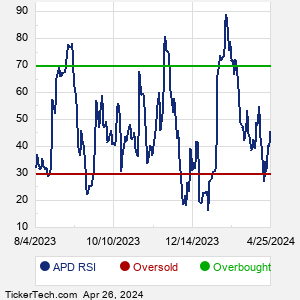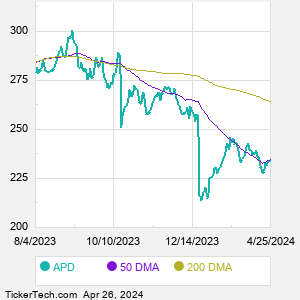Air Products and Chemicals provides industrial gases, related equipment, and applications capability. Co. develops, engineers, builds, owns, and operates industrial gas and carbon-capture projects, supplying hydrogen that will support global transportation, industrial markets, and the broader energy transition away from fossil fuels. Co. engages in hydrogen, helium, and liquefied natural gas process technology and equipment, and provides turbomachinery, membrane systems, and cryogenic containers globally. Co.'s industrial gases business produces and sells atmospheric gases, such as oxygen, nitrogen, and argon; process gases, such as hydrogen, helium, and carbon dioxide; and specialty gases.
When researching a stock like Air Products and Chemicals, many investors are the most familiar with Fundamental Analysis — looking at a company's balance sheet, earnings, revenues, and what's happening in that company's underlying business. Investors who use Fundamental Analysis to identify good stocks to buy or sell can also benefit from APD Technical Analysis to help find a good entry or exit point. Technical Analysis is blind to the fundamentals and looks only at the trading data for APD stock — the real life supply and demand for the stock over time — and examines that data in different ways. One of these ways is called the Relative Strength Index, or RSI. This popular indicator, originally developed in the 1970's by J. Welles Wilder, looks at a 14-day moving average of a stock's gains on its up days, versus its losses on its down days. The resulting APD RSI is a value that measures momentum, oscillating between "oversold" and "overbought" on a scale of zero to 100. A reading below 30 is viewed to be oversold, which a bullish investor could look to as a sign that the selling is in the process of exhausting itself, and look for entry point opportunities. A reading above 70 is viewed to be overbought, which could indicate that a rally in progress is starting to get crowded with buyers. If the rally has been a long one, that could be a sign that a pullback is overdue. |



